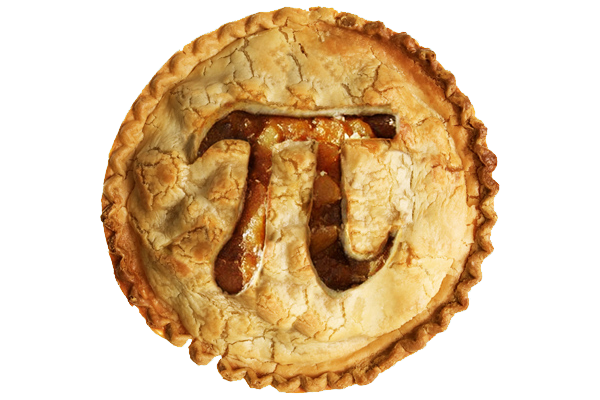- TRSET
Is pi an infinite number? What is the 31 trillionth digit of pi?
What is the 31 trillionth digit of pi? What is the 100 trillionth digit of pi?
Will pi ever be solved? Why is pi 22 7? Is pi forever repeating?
+ index service
+ TR Search Engine Technology
In Aug 2021,The University of Applied Sciences of the Grisons calculated π to 62,831,853,071,796 digits, adding 12.8 trillion new digits to the previous record. They used a high-performance computer with one terabyte of RAM and 510 terabytes of disk space. The calculation took 108 days and 9 hours to complete.
In March 2019 Iwao Emma Haruka from Google cloud computing calculated the value of π to 31,415,926,535,897 digits using a program called y-cruncher. She then set the world record in 2022 by calculating up to 100 trillion digits of π.
The history of the computation of π is a long and fascinating one, dating back to ancient times. π is the ratio of the circumference of a circle to its diameter, and it is an irrational number, meaning that it cannot be expressed as a fraction of two integers. It is also a transcendental number, meaning that it cannot be the solution of any polynomial equation with rational coefficients. Some of the earliest approximations of π were made by the ancient Babylonians, Egyptians, Sumerians, and Chinese, who used various methods to estimate the area or circumference of a circle. They obtained values ranging from 3 to 3.16. The first rigorous calculation of pi was done by Archimedes of Syracuse (287–212 BC), one of the greatest mathematicians of the ancient world. He used a method called exhaustion, which involved inscribing and circumscribing regular polygons around a circle and calculating their perimeters.
Many other mathematicians and scientists contributed to the computation of π over the centuries, using different techniques such as infinite series, continued fractions, arithmetic-geometric means, and Monte Carlo methods.
Some notable names include Zu Chongzhi (429–501), who calculated pi to seven decimal places; François Viète (1540–1603), who derived an infinite product formula for pi; John Machin (1680–1751), who computed pi to 100 decimal places; Srinivasa Ramanujan (1887–1920), who discovered many rapidly converging series for pi; and John Wrench (1913–1990), who computed pi to one million decimal places using a desk calculator. Today, computers have enabled the computation of π to trillions of digits, using algorithms such as the Chudnovsky algorithm, the Bailey–Borwein–Plouffe formula, and the y-cruncher program. These calculations are mainly done for testing the performance and reliability of computers, as well as for setting world records.
However, for most practical purposes, only a few digits of π are sufficient. 😊

-

 Davranışımı Gör Duygumu Anla
Davranışımı Gör Duygumu Anla -

 Çözelti Nedir?
Çözelti Nedir? -

 The Longest Equation in Physics
The Longest Equation in Physics -

 Sınav Kaygısı Nasıl Giderilir?
Sınav Kaygısı Nasıl Giderilir? -

 Çocuklarda Sanatsal Gelişim
Çocuklarda Sanatsal Gelişim -

 Oyunun Çocuğun Psikolojik Sağlamlığındaki Önemi
Oyunun Çocuğun Psikolojik Sağlamlığındaki Önemi -

 Atmosfer Nedir?
Atmosfer Nedir? -

 Kardeş İlişkileri
Kardeş İlişkileri -

 Pi Günü ve Pi Haftası Nedir? Sevilen Pi Etkinliklerinden Örnekler
Pi Günü ve Pi Haftası Nedir? Sevilen Pi Etkinliklerinden Örnekler -

 Gökkuşağı Nasıl Oluşur?
Gökkuşağı Nasıl Oluşur? -

 Johannes Nicolaus Brønsted ve Kimyasal Tepkime
Johannes Nicolaus Brønsted ve Kimyasal Tepkime -

 İlkokul Öğrencilerinin Gelişim Evreleri
İlkokul Öğrencilerinin Gelişim Evreleri -

 Atom ve Periyodik Sistem
Atom ve Periyodik Sistem -

 Weltberühmtes Türkisches Spa
Weltberühmtes Türkisches Spa -

 Dijital Oyunlar ve Etkileri
Dijital Oyunlar ve Etkileri -

 Günseli Kato‘nun Eserlerinde Kullandığı Semboller ve Anlamları
Günseli Kato‘nun Eserlerinde Kullandığı Semboller ve Anlamları -

 Düzenli Ödev Yapma ve Ders Çalışma Alışkanlığı Nasıl Kazanılır?
Düzenli Ödev Yapma ve Ders Çalışma Alışkanlığı Nasıl Kazanılır? -

 Sivrisineklerden Kurtulma Yolları
Sivrisineklerden Kurtulma Yolları





 Share This Page
Share This Page WhatsApp CH
WhatsApp CH Twitter
Twitter YouTube
YouTube Linked in
Linked in Instagram
Instagram Facebook
Facebook